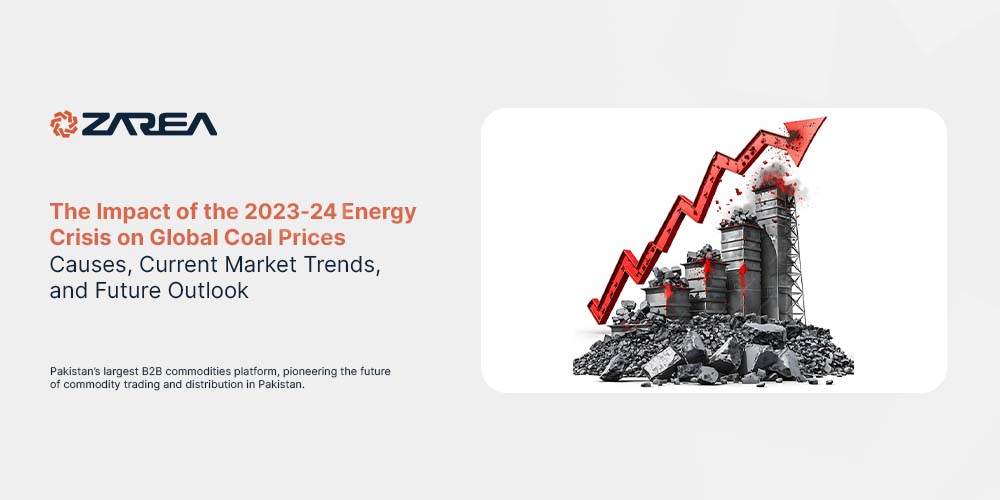Introduction – Energy Crisis Global 2023-24:
Pakistan is currently facing a complex energy crisis. It has extended into political turmoil and economic stagnation. The power sector is a major factor in this energy crisis global. It is plagued with inefficiencies that have driven electricity prices and coal prices to high levels. So, they are unaffordable for many citizens.
Public demonstrations against rising coal and electricity costs highlight widespread dissatisfaction. Conversely, economic inequalities are escalating as a result of a growing reliance on external debt. In this context, Independent Power Producers (IPPs) play a vital role in determining the future of the nation’s energy framework. In May 2024, circular debt in the power sector rose to Rs 2,310 billion. Payments due to IPPs could also rise to nearly Rs 1,800 billion. This scenario highlights the pressing necessity for reforms to tackle the inefficiencies, mismanagement, and absence of transparency. Thus, it is genuinely impacting the power sector.
The global energy crisis of 2023-24 represented a time of significant disruption in worldwide energy markets, causing coal prices to reach record highs. This spike was driven by a mix of geopolitical conflicts, supply chain challenges post-pandemic, and a pressing demand for energy security, especially in Europe. Although the crisis highlighted coal’s significance, it emphasized the necessity for robust and varied energy sources. Zarea defines in today’s blog that what are the main reasons which increase the 2023-24 coal prices. As we also evaluate present market trends, consider logistical difficulties, and offer a prediction. So, regarding coal’s position in the global energy landscape.
Causes of the 2023-24 Energy Crisis:
- Geopolitical Tensions
The conflict between Russia and Ukraine significantly affected international energy markets. Due to sanctions on Russian energy exports, Europe needed to shift to alternative fuels, like coal, to fulfill urgent energy requirements. This change in demand put pressure on worldwide coal supplies, driving prices to unprecedented levels as Europe raced to obtain energy sources. - Supply Chain Disruptions
The enduring impacts of the COVID-19 pandemic are still causing disruptions to global supply chains in 2023 and 2024. It is also a significant contributor to the ongoing global energy crisis in 2023-24. Elevated shipping fees, workforce shortages, and port congestion influenced coal transportation globally, hindering suppliers from fulfilling increased demand as economies rebounded.
-
Energy Security Concerns
As natural gas supplies were curtailed, particularly in Europe, countries reverted to coal to ensure energy stability. Germany, Poland, and other European nations increased coal imports to prevent power shortages, further driving up demand and prices.
Current Coal Market Trends in 2024:
By 2024, coal prices have decreased but still stay high relative to levels before the crisis.
- Global Coal Prices: The global price for thermal coal is about $145 per metric ton. Even though prices have dropped from the highest point in 2022, they still stay elevated because of continuous demand from Asia, where coal is vital for industrial energy.
- Coal Prices in Pakistan: In Pakistan, the current price of coal is approximately $115 per metric ton. The decline in local currency value and elevated import expenses have maintained high coal prices, affecting industries like cement, steel, and power generation that depend heavily on this energy source.
- Demand and Consumption Patterns: The demand for coal stays robust in China and India, whereas European nations are still utilizing coal as an additional energy source, particularly when renewable energy generation is reduced.
Logistics and Transportation Challenges:
Logistical issues have been a significant factor in maintaining high coal prices, even as the initial crisis has eased.
- Shipping Costs: Shipping costs remain elevated, driven by fuel prices and container shortages. For coal, which relies heavily on maritime transport, these factors contribute significantly to the end-user price.
- Domestic Transport Costs: In countries like Pakistan, the cost of transporting coal from ports to industrial centers adds considerably to its final price. Rising fuel costs further exacerbate these expenses, impacting industries that rely on coal for production.
- Supply Chain Vulnerabilities: Although global supply chains have become more stable, difficulties continue, especially in coal transportation. Port congestion and regional disturbances persist in impacting coal availability and pricing, leading to intermittent supply-demand mismatches.
Economic and Environmental Impacts:
Economic Impact
- Inflation and Production Costs: The increase in coal prices has resulted in inflationary pressures in economies reliant on energy. Increased coal prices have raised electricity costs, affecting manufacturing and construction industries and elevating the prices of goods and services.
- Financial Strain on Developing Nations: In developing nations dependent on imported coal, elevated costs have put pressure on government finances. In countries such as Pakistan, this has restricted the capacity to distribute resources to other vital sectors, hindering economic recovery after the pandemic.
Environmental Setbacks
The temporary return to coal during the crisis has complicated global climate goals. As nations prioritized obtaining immediate energy supplies, coal usage increased significantly, resulting in elevated carbon emissions and postponements in shifting to cleaner energy alternatives.
Future Forecast for Coal Prices and Market Dynamics
Looking ahead, several trends are expected to shape the coal market:
- Declining Demand with Renewable Growth: With the rapid growth of investments in renewable energy, it is anticipated that the worldwide demand for coal will slowly decline. Countries striving for carbon neutrality by 2050 are concentrating on decreasing reliance on coal, which will likely aid in stabilizing prices over the long run.
- Price Forecast: Industry projections indicate a steady decrease in coal prices in the coming years. The World Bank expects a 28% reduction in coal prices in 2024, followed by a further 12% decline by 2025, provided that supply remains stable and the transition to renewables continues.
- Energy Security Initiatives: Nations are making efforts to broaden their energy sources and establish strategic reserves. In Europe, for instance, initiatives aimed at decreasing reliance on imported coal are resulting in heightened renewable investments and enhanced energy infrastructure.
- Logistics and Infrastructure Improvements: To tackle persistent transportation issues, nations that export coal are investing in port facilities and upgrading supply chains. Enhanced logistics may aid in stabilizing coal prices by providing more dependable and efficient transportation.
Conclusion
The global energy crisis of 2021-22 highlighted the weaknesses in the worldwide energy system and emphasized the essential importance of coal for energy security during crises. Although coal prices have decreased from their highest point, they are still above pre-crisis levels, indicating persistent demand in major markets. This situation has expedited the worldwide drive for renewable energy and strengthened the necessity for energy resilience.
As the consumption of coal declines in favor of cleaner energy alternatives, nations must reconcile urgent energy security requirements with their long-term environmental objectives. Establishing a strong, varied energy infrastructure is crucial to guarantee that upcoming crises do not undermine economic stability or sustainability goals.
References
- Coal Price in Pakistan – Coal-price.com (2024). Retrieved from Coal Price Data
Coal Price
- Global Coal Prices and Market Trends – Markets Insider (2024). Available at Markets Insider
markets.businessinsider.com
- World Bank Blog on Coal Market Developments – Coal Market Trends and Forecast (2023). Available at World Bank Data Blog
World Bank Blogs
- Global Price Tracking for Commodities – Trading Economics (2024). Available at Trading Economics
Trading Economics

































